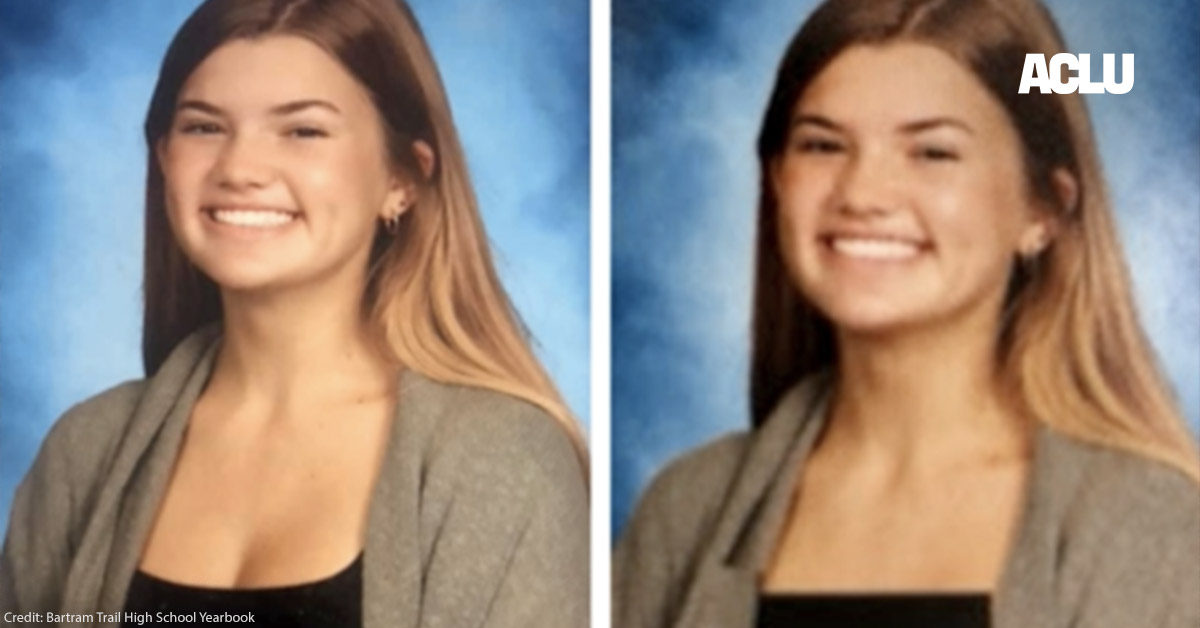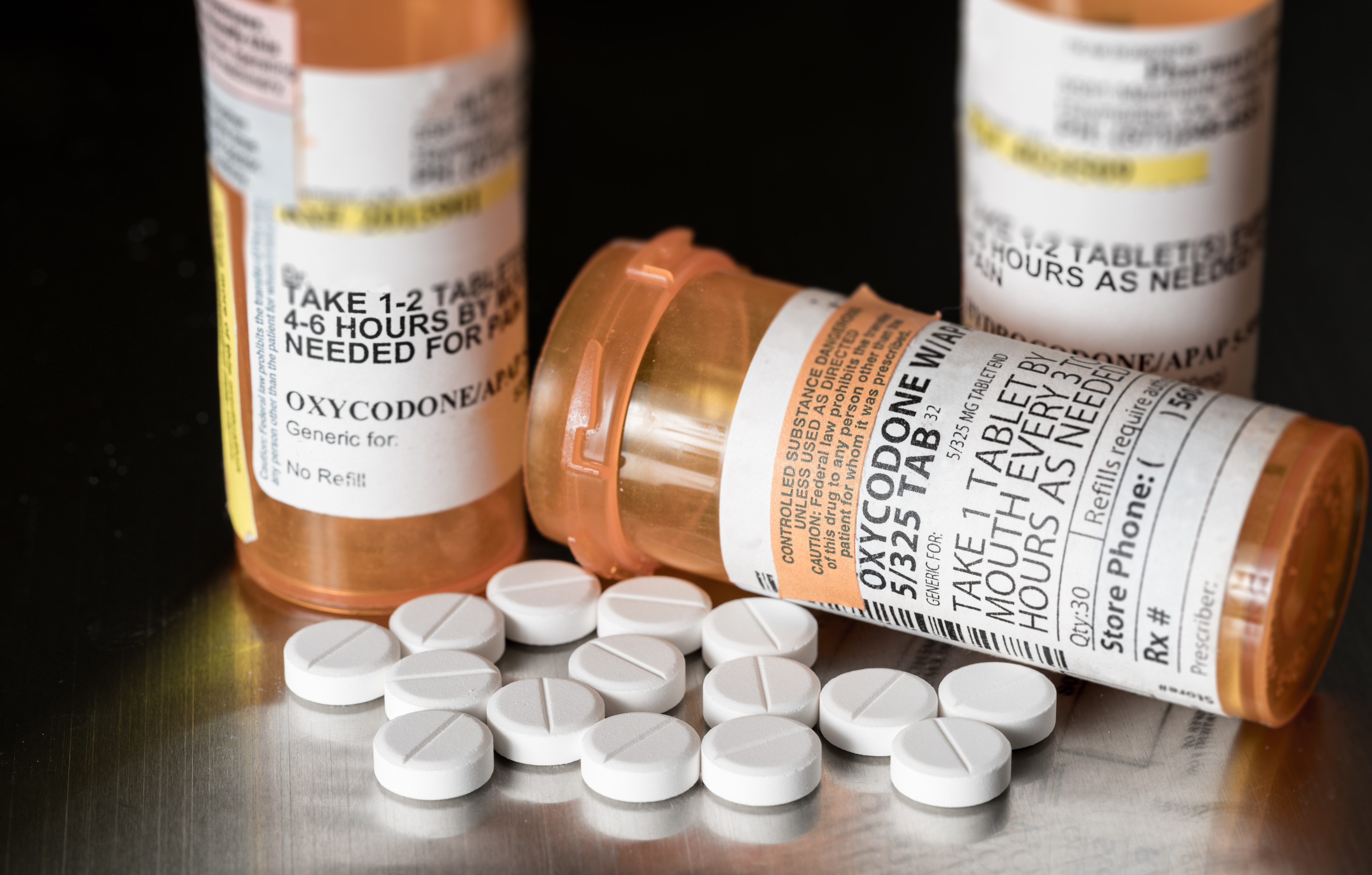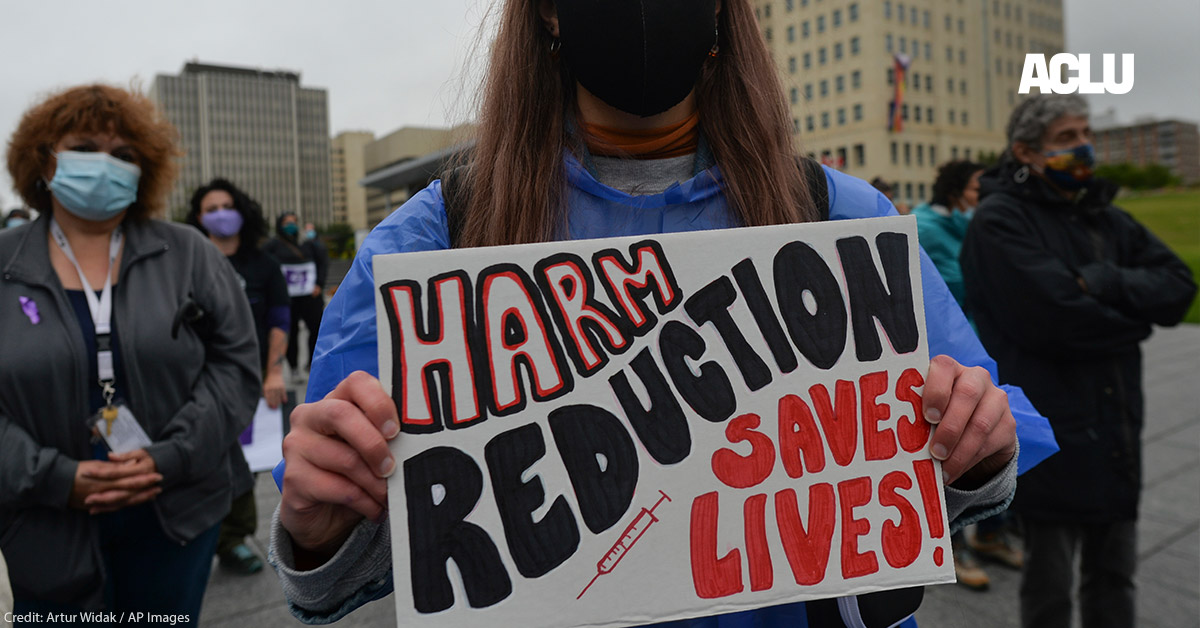By Riley O'Keefe, High School Student
Last May, I was counting down the final days of my freshman year at Bartram Trail High School and anxiously waiting to pick up my first high school yearbook. When the yearbooks finally came, I rushed down the hallways to the cafeteria to grab my copy and immediately did what every kid does: I flipped through the pages until I found my photo. But when I found it, my stomach dropped. The school had inserted a black rectangular bar across my chest — censoring my body in my high school yearbook without my knowledge or consent.
The fact that an adult teacher had looked at my photo and decided to censor my chest made me feel exposed and embarrassed. The school had censored the photos of at least 80 other students — all girls — to cover up their chests. Meanwhile, the photos of boys were completely untouched — including a photo of the boys’ swimming team, where they were wearing only swim briefs. I realized then that the school’s issue wasn’t with how students were dressed. The school’s issue was with girls’ bodies.
I felt angry and shamed by the school, but not surprised. My high school — and the entire St. Johns County School District, where my high school is located — has enforced its dress code unfairly against girls for as long as I’ve been a student. Until recently, the school district’s dress code set out different rules for boys and girls, including that girls’ tops must cover the shoulder and be “modest and not revealing or distracting” and that girls’ bottoms may not be less than four inches above the knee — something I received a dress code warning for. On top of these gendered rules, the school district has targeted its enforcement against girls, with about 83 percent of dress code violations issued against female students.
Just a few months earlier, my high school conducted dress code sweeps and pulled dozens of girls out of class because their clothes were “out of code.” One teacher even forced a girl to unzip her sweatshirt in front of other students and staff, even though she said would rather not because she was only wearing a sports bra underneath. The school has also conducted dress-code checks when students enter the building, where girls have been disproportionately scrutinized.
As a girl, I feel like the school cared more about what I was wearing than about my education or comfort. I became so anxious about being dress coded that I often second-guessed myself or found myself changing my outfit multiple times before school. Other girls I know have worn long shirts and pants — including in the heat — to prevent scrutiny, and the repeated dress coding caused one girl to have a panic attack in the bathroom. After speaking with fellow classmates, it is clear that these harmful effects can be even worse for transgender, non-binary, or gender-nonconforming students by reinforcing sex stereotypes, as well as for girls of color.
To fight back against the school’s sexist dress code, I created an online petition to call on the school district to stop sexualizing girls’ bodies and to change its policies. I spoke out with my classmates and parents at school board meetings to share our experiences with the dress code. And in July, the ACLU Women’s Rights Project and the ACLU of Florida sent a letter explaining that gendered dress codes violate our civil rights and asking the St. Johns County school district to end its discriminatory dress code enforcement against girls. Thanks to all of these efforts, the St. Johns County School Board voted to remove the gendered language from its dress code in time for the new school year.
While I’m glad that the school district took this step, it is not enough to change the language of the dress code. The school district must also change its actions.
In addition to passing the gender-neutral dress code, the school district must create policies to prevent future discriminatory enforcement of its dress code against girls — including by ending the humiliating practice of dress code sweeps and scrutinizing students’ bodies and clothing. The school district should also take steps to hear the concerns and feedback of students and parents about the dress code’s enforcement. It is the school district’s responsibility to ensure a safe and equal learning environment in our schools.
When the school board recently met to discuss the dress code, one of the School Board members said: “You understand that there’s a big difference between an elementary school student’s physical anatomy than there is a high school student … A first-grade student has the same physical size as a first-grade student, if I’m making any sense there.” These comments shocked me at the time, and the more I think about them, the more I realize that the school district oversexualizes and views girls’ bodies as a problem.
It’s time to understand that shaming girls is harmful and discriminatory and makes it unnecessarily stressful for us to get an education. Girls shouldn’t be made to feel that there is something wrong with having a body.
Share Your Story with the ACLU
Date
Thursday, September 30, 2021 - 4:30pmFeatured image






